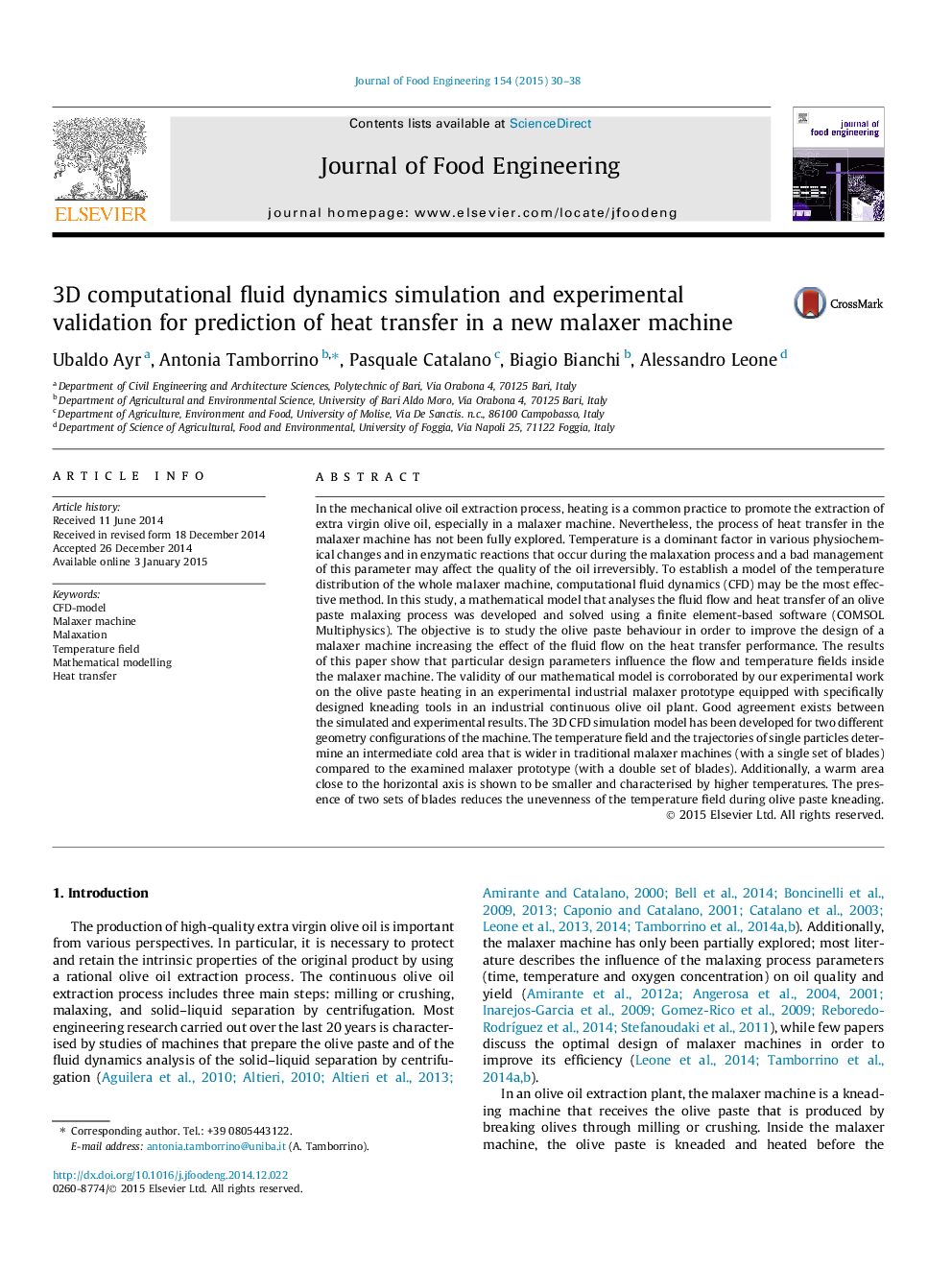| Article ID | Journal | Published Year | Pages | File Type |
|---|---|---|---|---|
| 222983 | Journal of Food Engineering | 2015 | 9 Pages |
•A mathematical model of an olive paste malaxing process was developed.•Geometrical factors in the blade system of the kneading shaft were considered.•The CFD model was validated with experimental results from a real production process.•3D CFD simulation is a valuable tool for designing and optimising of the malaxers.
In the mechanical olive oil extraction process, heating is a common practice to promote the extraction of extra virgin olive oil, especially in a malaxer machine. Nevertheless, the process of heat transfer in the malaxer machine has not been fully explored. Temperature is a dominant factor in various physiochemical changes and in enzymatic reactions that occur during the malaxation process and a bad management of this parameter may affect the quality of the oil irreversibly. To establish a model of the temperature distribution of the whole malaxer machine, computational fluid dynamics (CFD) may be the most effective method. In this study, a mathematical model that analyses the fluid flow and heat transfer of an olive paste malaxing process was developed and solved using a finite element-based software (COMSOL Multiphysics). The objective is to study the olive paste behaviour in order to improve the design of a malaxer machine increasing the effect of the fluid flow on the heat transfer performance. The results of this paper show that particular design parameters influence the flow and temperature fields inside the malaxer machine. The validity of our mathematical model is corroborated by our experimental work on the olive paste heating in an experimental industrial malaxer prototype equipped with specifically designed kneading tools in an industrial continuous olive oil plant. Good agreement exists between the simulated and experimental results. The 3D CFD simulation model has been developed for two different geometry configurations of the machine. The temperature field and the trajectories of single particles determine an intermediate cold area that is wider in traditional malaxer machines (with a single set of blades) compared to the examined malaxer prototype (with a double set of blades). Additionally, a warm area close to the horizontal axis is shown to be smaller and characterised by higher temperatures. The presence of two sets of blades reduces the unevenness of the temperature field during olive paste kneading.
